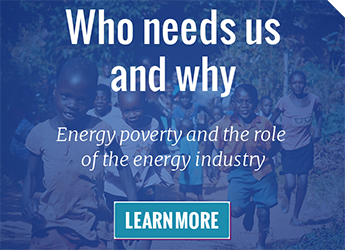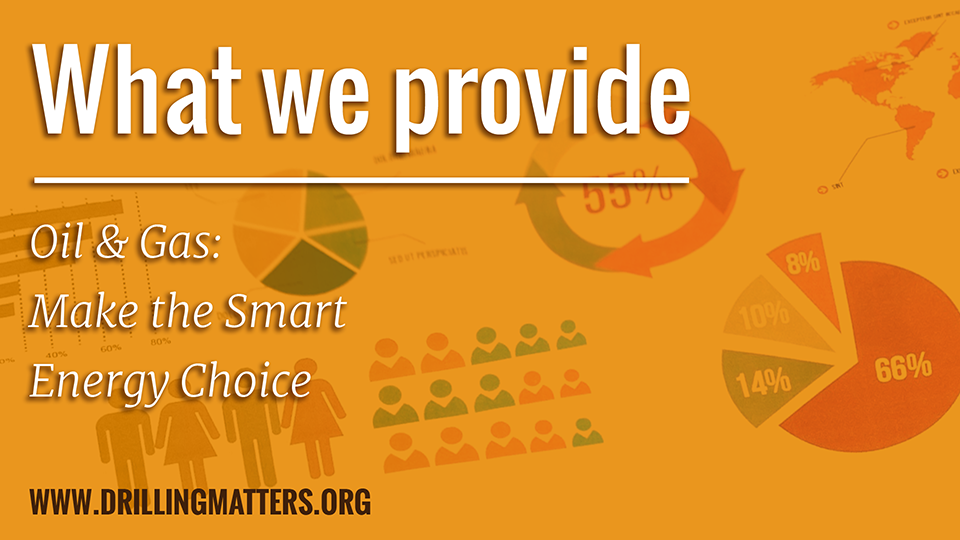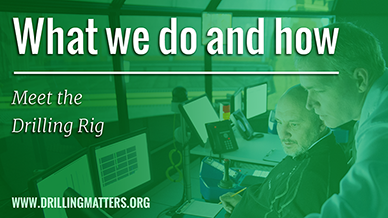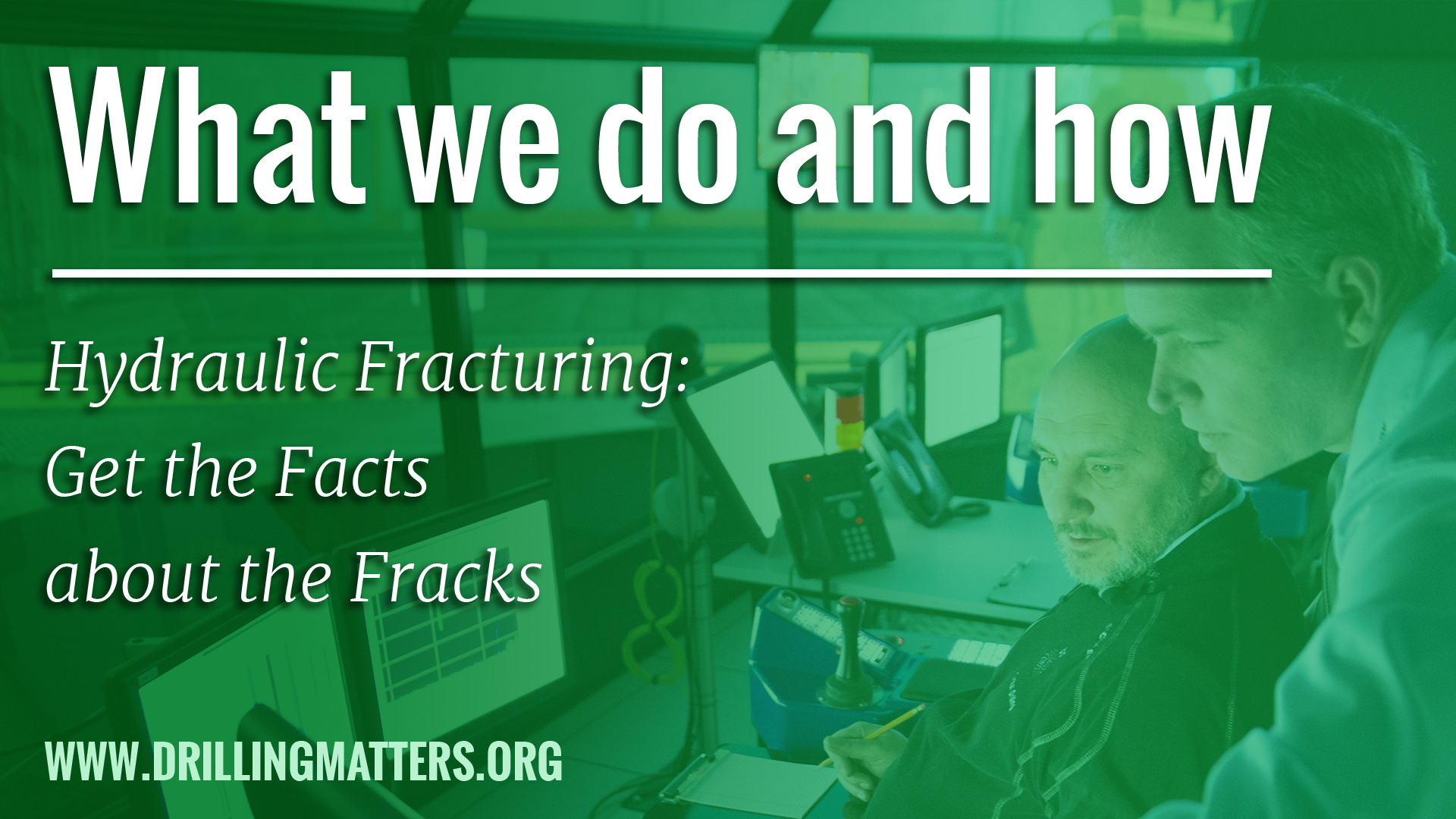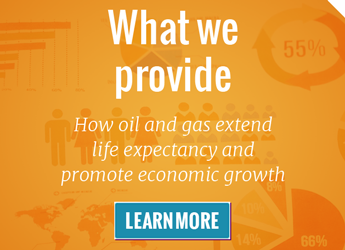
How Hydrocarbons Drive Jobs and the Economy
As the most abundant, affordable and reliable energy source, fueling most of the planet’s power and electricity needs, oil and gas hydrocarbons also provide value in another very significant way: Jobs. And those jobs are generated across countries in every region of the globe, creating a ripple effect that stimulates local economies.
In developed countries, we take for granted all the ways these fossil fuels improve and enhance our lives.
Narration Transcript
As the most abundant, affordable and reliable energy source, fueling most of the planet’s power and electricity needs, oil and gas hydrocarbons also provide value in another very significant way: Jobs. And those jobs are generated across countries in every region of the globe, creating a ripple effect that stimulates local economies.
Susan Farrell, Vice President of IHS: “Over 50 countries in the world produce oil and gas - produce oil and gas. Every country uses oil and gas, but over 50 countries produce oil and gas. So obviously there’s a big economic generator going there, but how big is it really? Well, let’s look at it in stages. You have the producing countries and the direct effect of people who work in the oil and gas industry, and if you think of finding and developing and producing and transporting and processing oil and gas, it’s a long and complex and very diverse value chain.”
Jobs generate tax revenue used to support local schools, as well as improve roads and other infrastructure. They enable families to purchase homes, buy cars, take vacations and improve their quality of life, activities that support local businesses and create additional jobs.
Ms Farrell: “People go out and they buy homes. They buy automobiles. They have insurance. They go to restaurants. They go to supermarkets. They generate economic activity.”
The exploration and production – or upstream — sector of the oil and gas industry finds and produces oil and gas. This industry also provides plenty of jobs, particularly in drilling, extraction, and technical support for these activities.
Ms Farrell: “Nothing happens without drilling. You can’t produce oil and gas if you don’t drill for it, right? So this is the starting point of the whole value chain is drilling. Really very critical, and if you look at drilling rigs: You have people. You have engineers. You have IT. You have equipment. You have logistics. You have helicopters. You have boats. You have food. You have consumption. You have administrative functions, and all of this is continuous throughout the value chain.”
In the US in 2015, the average number of people working in jobs directly related to the spudding, drilling and reworking of oil and gas wells was sixty-nine thousand, nine hundred sixty-seven, generating close to seven billion dollars in wages.
Oil and gas extraction, which is conducted by companies that operate, develop and produce oil and natural gas fields, employed more than 192,000 people in the United States in 2015, and generated more than $31 billion in wages.
Support activities, such as exploration, excavation, well surveying and well construction, employed an additional 278,000 workers in 2015 and generated more than $23 billion in wages.
So, altogether, in 2015, US oil and gas extraction and supporting activities employed an average of nearly 541,000 people earning a combined average exceeding $61 billion.
And that’s simply to produce the oil and gas. The value chain continues with the “midstream” sector. “Midstream” refers to the transportation of crude oil and natural gas by rail, oil tanker or barge, truck or pipeline.
Oil and gas pipeline construction alone employed more than 135,000 people in 2015 and they earned more than $10.6 billion in annual wages.
Pipeline transport of crude oil and natural gas provided an average exceeding 40,000 workers, with wages of $4.9 billion.
In the downstream sector, which involves the refining of petroleum crude oil and the processing and purifying of raw natural gas, as well as the marketing and distribution of products derived from crude oil and natural gas, more than 68,000 workers earned $9.5 billion in wages in 2015.
The bulk of US oil and gas production occurs in 10 states: Alaska, California, Colorado, Louisiana, New Mexico, North Dakota, Oklahoma, Pennsylvania, Texas and Wyoming. But the economic ripple effect of oil and gas activity is even more far-reaching.
A single land rig employs on average twenty-two people directly. But that’s just the beginning. Each direct drilling job produces on average three additional jobs, including additional rig services, but extending to the general economy – restaurants, hotels, convenience stores, construction, real estate, home improvement, retail outlets, charitable organizations, travel and leisure.
Ms Farrell: “So for every one person working directly in the oil and gas industry there were three more people, which were the supply chain. Think of it as a pyramid.”
The upshot is that every land rig, assuming twenty-two direct employees, produces a total of eighty-eight total jobs.
Offshore on deepwater rigs, with 200 rig workers, using the same multiplier, results in something like 800 jobs total, including shore-based support, additional technical specialists, boats, helicopters, and all aspects of the general economy – retailers, restaurants, hotels, and so forth.
In addition to industry employment, oil and gas activity also directly impacts output and employment in other sectors of the US economy, and has helped spur a resurgence in US manufacturing. In 2012, the industry supported 2.1 million jobs.
While oil and gas recovered through multi-stage hydraulic fracturing and related chemical activity, which contributed almost $284 billion to the American gross domestic product.
The economic impact of oil and gas development includes the US offshore sector. In 2014, 421,000 American jobs were directly or indirectly tied to the Gulf of Mexico energy industry, contributing $35.9 billion to the US gross domestic product.
A common misconception is that oil and gas professionals live only in oil-producing regions. This is far from the truth, especially for the Gulf of Mexico. Although offshore drilling in the United States is limited to the Central and Western Gulf of Mexico and a small portion of offshore Alaska, sixty-eight percent of all US Congressional Districts are home to Gulf of Mexico rig workers, a 2010 study found.
The International Association of Drilling Contractors, known by the acronym IADC, represents members who operate in the drilling industry or who provide services or products to the industry. As this map shows, IADC members operate in all but nine states.
Ms Farrell: “Even though there were a handful of less than 10 producing oil and gas states in the United States, the influence of the supply chain spread to nearly all the 50 states. Why would that be? Because when you look at equipment it comes from all over the country, so you might have a middle western state that is nowhere near any oil producing states, but it makes pieces that go on a drill rig. It makes a diesel engine that powers a drilling rig, so you’re creating jobs in the middle of the country. You have engineering expertise, you have geophysicists, you have scientific expertise, you have IT experts, and they all contribute something which filters down to the actual physical piece of equipment that you’re using.”
Let’s travel to the state of Colorado, one of the nation’s top oil- and natural gas-producing states, to take a closer look at how revenue from oil and gas activity flows into the state’s general fund and cash fund to benefit every citizen.
Thirty-seven of Colorado’s 64 counties – more than half – recorded taxable oil and gas property. In 2014, Colorado recorded 2 trillion cubic feet of natural gas production and 95.2 million barrels of oil. Further, in 2014, the oil and gas industry contributed significant revenue to the state of Colorado.
Dan Haley, President and CEO, Colorado Oil and Gas Assn: “Every citizen in Colorado is positively impacted by the oil and gas industry. First, I think it’s important to explain that our energy costs in Colorado are among the lowest in the country, and that’s because we’re producing that resource here at home, so this is the cost to fuel your car, but also the cost to heat your home or heat your business. We’re also seeing manufacturing costs come down quite a bit, which is good overall for the business community in Colorado.”
The oil and gas industry contributes millions in tax revenue and fees to the state: $109 million in income taxes; $434.7 million in property taxes; $154.2 million from land leases and royalties on federal land; $158 million from leases and royalties on state land; $330 million in severance taxes on the production of oil and natural gas; $10.7 million toward the Colorado Oil and Gas Conservation Commission, which fosters the responsible development of Colorado's oil and gas natural resources.
Mr Haley: “We pay $1.1 billion in state and local taxes. About $330 million in 2014 was paid through severance taxes, which is based on the value of the commodity. Of that $330 million, it’s split into two pots. Half of it goes to the state, which is used to fund the Department of Natural Resources to finance some water projects, and then half of it goes to local governments in the form of grants and also just direct support to that local government. So you can be a local government that has no oil and gas activity in your community, but you’re still getting that money in, so all the local communities in Colorado have a chance to access that pot of money.”
Education benefits, too. More than half of property tax revenue in oil and gas-producing counties -- $244 million – went to local schools.
Mr Haley: “The oil and gas industry has a very positive impact in schools here in Colorado. We pay about $234 million in taxes that go directly into schools, so schools see the impact of what we’re doing everyday, and it’s not just the money we pay into it, but the fact that because we’re producing energy here we’re able to keep those energy costs low. So that’s less money that those schools now need to pay to heat their schools, to cool their schools and so they’re seeing an impact there. Also, there’s a lot of school districts here in Colorado that run their buses on natural gas which is a cleaner burning fuel — so again another positive impact that you’re seeing in our schools here in Colorado.”
From the millions of jobs directly related to the drilling, production, delivery and refining of hydrocarbons, to indirect jobs in manufacturing, shipping and transportation, the impact of the US oil and gas industry is significant and far-reaching.
The ripple effect of those jobs is seen in the increased retail activity in restaurants, hotels and retail establishments on bustling boulevards and main streets across the US, creating even more jobs and prosperity.
Finally, millions of dollars in tax and land lease revenues from oil and gas activity flows into local communities and schools, enhancing education and improving roads and infrastructure.
The hydrocarbon industry benefits many people across the US and, indeed, around the world. Your neighbors might be among them.

